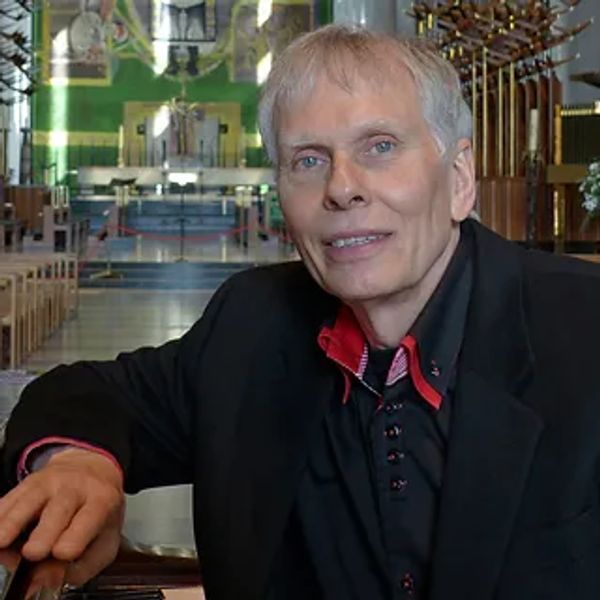Enjoy the Magic of Classical Music with Warwickshire Symphony Orchestra
Join us for unforgettable performances of timeless masterpieces
Spring Concert 14th March 2026
All Saints' Church Leamington
Signed in as:
filler@godaddy.com
Join us for unforgettable performances of timeless masterpieces
Spring Concert 14th March 2026
All Saints' Church Leamington

Spring Concert - Saturday 14th March 7:30pm
Fanfare for the Common Man - Copland
Overture on Russian Themes - Rimsky-Korsakov
Violin Concerto - Brahms
Symphony No 7 - Beethoven
Soloist - Callum Smart
Conductor - Richard Jenkinson
Next concert 13th June 2026 - more to follow

Principal Conductor - Roger Coull
Warwickshire Symphony Orchestra 's Principal Conductor is Roger Coull
Roger Coull’s route into conducting has come very much from the eyes and ears of a performer. As a string quartet leader of international standing he has always been used to interpreting music and every aspect of the process of turning a vision into performance.

Associate Conductor - Paul Leddington Wright
Warwickshire Symphony Orchestra's Associate Conductor is Paul Leddington Wright
Paul started conducting at the age of 15 He won an organ scholarship to study at Cambridge and continued his conducting alongside his studies.
Following university, he started a career in Musical Theatre. Work in the West End and provincial theatre lasted until he moved to Coventry to take up the position of sub-organist then musical director at the Cathedral (a position he retired from recently)
Fanfare for the Common Man - Aaron Copland
In late August 1942, Eugene Goossens, the conductor of the Cincinnati Symphony, wrote to Copland requesting a patriotic fanfare to help with the war effort. Goossens suggested the instrumentation of brass and percussion and length of about two minutes. A large group of American composers were given similar requests, and Goossens hoped to perform Copland's fanfare in October at his first concert of the season. Since Copland did not deliver the Fanfare until November, Goossens suggested another date: March 12, 1943, as it would then be income tax time, an ideal opportunity for honouring the common man.
Performed in memory of Huw and Seb - past percussionists of the WSO

Overture on Russian Themes - Nicolai Rimsky-Korsakov
Written in 1866 and revised in 1880, the Overture on Russian Themes offers an early showcase of Rimsky-Korsakov’s vibrant orchestration and his commitment to a distinct Russian musical voice. He played a crucial role in “The Mighty Handful”, a group of Russian composers that Mily Balakirev commanded. As Rimsky-Korsakov’s mentor, Balakirev was helping him develop, critique, and rework his musical ideas. This overture was modeled after Balakirev’s overtures and is based on three tunes from Balakirev’s collection of Russian folksongs published the same year.

Violin Concerto - Johannes Brahms
Among the great composer-musicians of the nineteenth century, Johannes Brahms (1833-1897) stands as somewhat of an anomaly. In an age that worshiped flamboyant personalities and in which composers strove to break from tradition in radical new ways, Brahms was a private man who forged his own musical identity while upholding the traditions of the past. The Violin Concerto — written for his lifelong friend, the famous violinist Joseph Joachim — embodies his high regard for classical forms and reflect his disdain for bravura and empty technical display. Although it poses some of the most difficult challenges in the concerto literature, Brahms’s Violin Concerto is not a showpiece: rather it reveals his desire to blend solo and orchestral lines into a unified, symphonic texture.

Symphony No 7 - Ludwig Van Beethoven
Though Beethoven began sketching ideas for a new symphony almost as soon as his Sixth had been completed in 1808, the main work on his Seventh Symphony began in the autumn of 1811. The piece was completed by the following summer and premiered to great public acclaim in December 1813; it has enjoyed remarkable popularity ever since.
Among the most high-spirited of Beethoven’s works, the symphony is particularly notable for the prominent role that rhythm plays throughout: characteristic rhythmic motifs pervade each movement. The symphony’s lively rhythms inspired Richard Wagner to regard it as “the apotheosis of the dance” Commentators have also noted the rustic, Arcadian character of many of the Symphony’s themes, perhaps influenced by the fact that Beethoven composed while arranging Scottish, Irish, and Welsh folksongs at the behest of Edinburgh-based publisher George Thomson.







Warwickshire Symphony Orchestra acknowledges its duty of care to safeguard and promote the welfare of children and young people. It is committed to ensuring safeguarding practice reflects statutory responsibilities, government guidance and complies with best practice and Working Together to Safeguard Children Act 2023 requirements.
Our policy recognises that the welfare and interests of children are paramount in all circumstances. It aims to ensure that regardless of age, ability or disability, gender reassignment, race, religion or belief, sex or sexual orientation and/or socio-economic background.